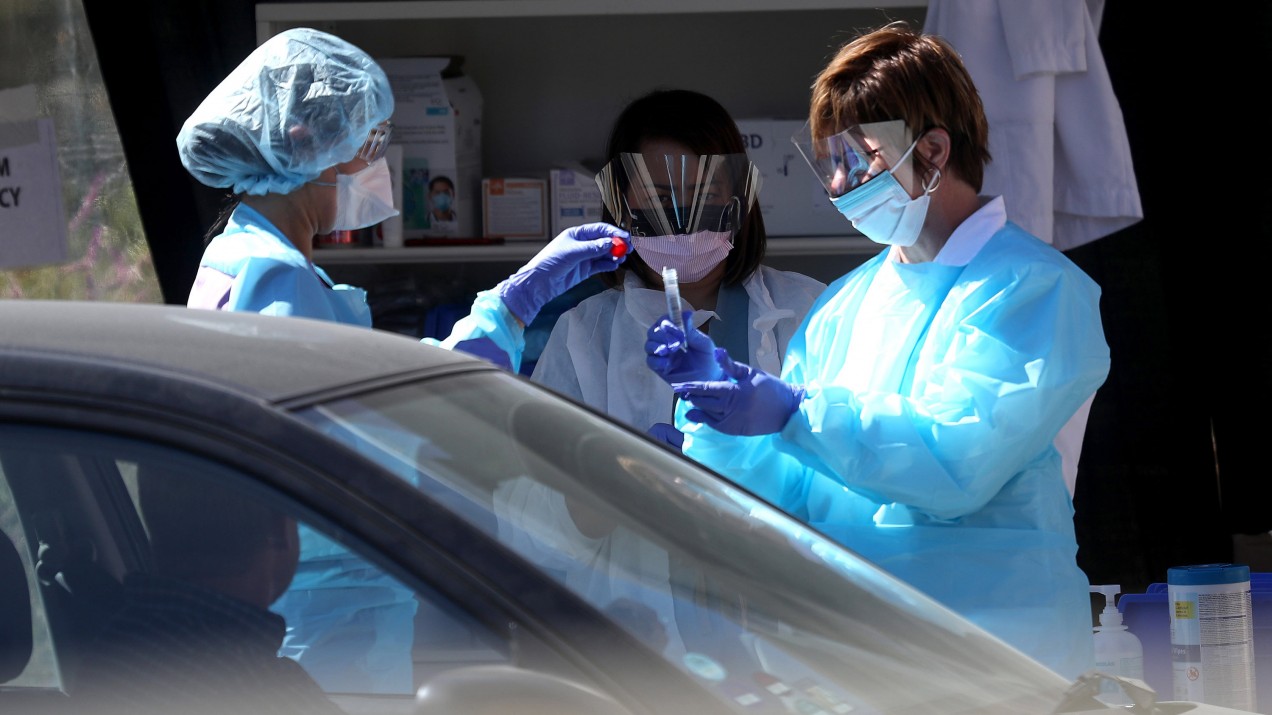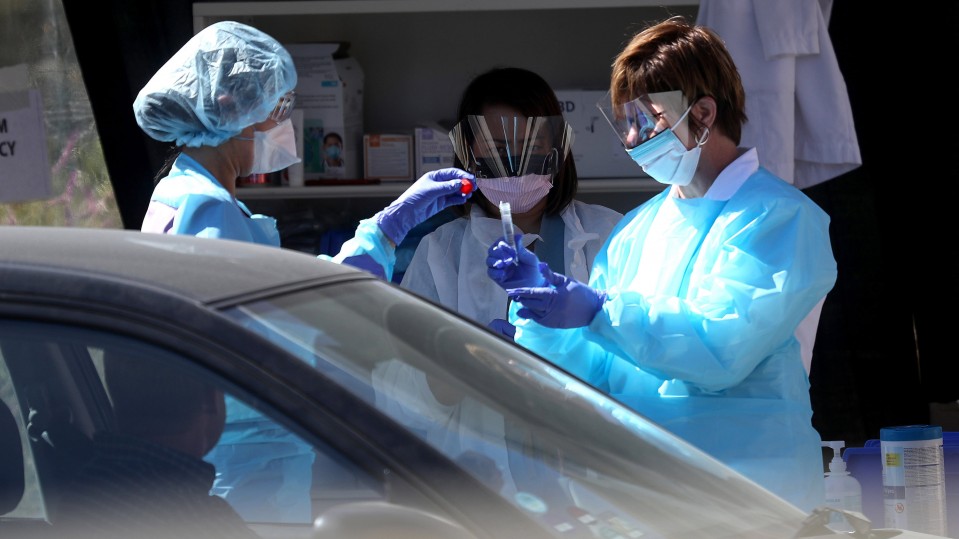

Biotechnology / DNA Testing
US coronavirus testing is slowly ramping up, but way too late
Private and academic labs are rushing to fill the void left by CDC’s mistakes, hoping to slow the deadly pandemic in the US.

In late January, as China locked down cities across the Hubei province to slow the spread of the coronavirus infecting thousands, Stanford Health virologist Benjamin Pinsky decided his lab needed to begin developing its own test for the bug.
They adapted a test protocol published by the World Health Organization to conform with standards for US clinical tests, ordered the necessary materials, and spent much of February running experiments to ensure it worked.
Shortly after the US Food and Drug Administration loosened standards to allow clinical labs to run their own tests, the agency signed off on the Stanford tests. On March 5, the university’s hospitals in Palo Alto, California—including Stanford Hospital and Lucile Packard Children’s Hospital Stanford—began using the in-house diagnostic to evaluate patients displaying symptoms of Covid-19. Pinsky can’t say how many tests they’re running at this point, but the lab can generally return results within a day.
You can read all of our coverage of the coronavirus/Covid-19 outbreak for free, and also sign up for our coronavirus newsletter. But please consider subscribing to support our nonprofit journalism.
Stanford’s clinical virology lab is one of a growing number of academic or private labs rushing to test for the rapidly spreading virus, as the US Centers for Disease Control and Prevention continues to struggle to scale up centralized efforts to diagnose and track the deadly disease.
On Friday, the Trump administration announced several steps to accelerate these sorts of testing efforts. The Department of Health and Human Services said it would provide around $1.3 million to two US companies, DiaSorin Molecular and Qiagen, to accelerate development of Covid-19 tests. Separately, the Food and Drug Administration set up an emergency hotline to help clinical labs with any issues getting tests up and running, and allowed New York’s health department to authorize state labs to begin evaluating patients. It also granted Roche emergency authority to run SARS-CoV-2 tests on its systems, which can screen thousands of patients a day and provide results within four hours.
In addition, the White House is in talks with major diagnostic, retail, and technology companies about setting up drive-through testing locations and websites to direct people to them, Bloomberg reported.
But weeks after the virus began circulating in the US, numerous patients with possible symptoms still report that they’re being refused tests unless they’re already experiencing acute respiratory problems. Some who have been tested say they’ve had to wait days for results.
Health experts hope that as more clinical labs get up and running, and the CDC finally accelerates production of test kits for public health labs, a clearer picture of the outbreak’s full dimensions will emerge. But they also stress it’s all happening way, way too late.
It’s crucial to identify as many infections as possible in the earliest stages of an epidemic, to isolate those patients from the general population and warn those around them to take precautions. The fact that the US has restricted tests to the sickest and highest-risk patients (and the occasional professional basketball team) means health official have no idea how many people are infected and are spreading the disease.
The delays are sure to be deadly.
“It’s going to mean excess deaths that range potentially into the tens of thousands or hundreds of thousands,” says Michael Mina, an assistant professor at Harvard’s department of epidemiology and associate medical director at Brigham and Women’s Hospital. “The lack of testing capacity across the country right now is stifling our approach to tackling this virus and this pandemic in the United States.”
Ramping up testing could still enable more effective social distancing or other means of at least flattening the curve of caseloads, decreasing the peak infection levels that the health-care system will be forced to confront all at once.
Among the other academic and private testing efforts:
- Researchers at the University of Washington’s virology lab also started preparing for the arrival of the coronavirus in January, developing an in-house assay and scaling up its robotic diagnostic systems to handle more than 1,000 tests a day, as NPR reported. As of March 9, patients can schedule drive-through tests at the UW Medicine health-care facility, remaining in their cars as nurses perform nasal swabs for the virology lab to evaluate. Officials in South Korea, where around 8,000 people have tested positive for CovidD-19, have been carrying out these sorts of fast-food-style testing efforts for weeks.
- A number of private labs, including LabCorp and Quest Diagnostics, have also secured approval to begin conducting their own tests in recent days. Those companies reportedly have the capacity to process about 1,000 kits per day. That, in turn, has allowed other regions to begin drive-through testing, including California’s Marin County.
- Researchers at the University of California, San Francisco, have partnered with Mammoth Biosciences to develop a test that can deliver results within two hours, the San Francisco Chronicle reported. Separately, Facebook CEO Mark Zuckerberg announced the Chan Zuckerberg Initiative would fund the purchase of two FDA-approved diagnostic machines that would enable UCSF to accelerate CovidD-19 testing in the Bay Area.
- On March 4, the Gates Foundation announced it would commit $5 million to help Seattle-area public health agencies ramp up testing capacities, on top of the $100 million it pledged to combat the global spread of the disease and develop treatments. A few days later, the foundation added that it would fund a related effort to provide in-home tests across the region. Online giant Amazon has offered to help deliver those kits locally, CNBC reported two days later.
But even with these efforts, the US’s testing capacity is nowhere near the scale required.
The CDC began developing its own test in January, a standard step when a new disease emerges. But after it was distributed to public labs, a number of researchers reported that it produced inconclusive results.
Meanwhile, the fact that the CDC was assigned emergency authority to develop the test discouraged other labs from racing to develop their own, the Washington Post reported. Likewise, the FDA’s shifting regulations and onerous approval process held up a number of clinical labs from quickly rolling out their own tests. Even when academic labs are certified, they can often process only on the order of dozens of tests a day, unless they have automated systems in place like the one at the University of Washington.
While the technical problems with the CDC’s diagnostics have been addressed, the agency is still struggling to ramp up production and distribution of test kits, a challenge now exacerbated by an emerging shortage of critical materials.
Specifically, suppliers are struggling to keep pace with the sudden spike in demand for reagents, which are used to extract the genetic material from swabs. California governor Gavin Newsom announced on Thursday that the shortage was slowing the state’s ability to use CDC test kits to process its growing backlog of samples, comparing the situation to a printer with no ink.
The New York Times, which is operating a coronavirus case database, says that more than 1,600 people have tested positive in the US, as of Friday morning. But because of the limited diagnostics to date and strict criteria on who can be tested, experts believe actual infection rates are far higher today—possibly by orders of magnitude.
In fact, it’s not clear how many people have even been tested for the novel coronavirus, in part because testing is happening in such a fragmented way. A data research collaboration spearheaded by The Atlantic could only confirm that there have been about 14,000 tests in the US, as of Friday morning. By way of comparison, South Korea quickly developed the capacity to evaluate that many patients a day.
The collective result is that the US is weeks behind where it should be on testing and tracking at this stage. It means patients aren’t getting the care and information they need. Infected people are still spreading the virus to others. Health officials are largely operating in the dark. And we’ve missed our best chance to contain the disease and avoid many, many preventable deaths.